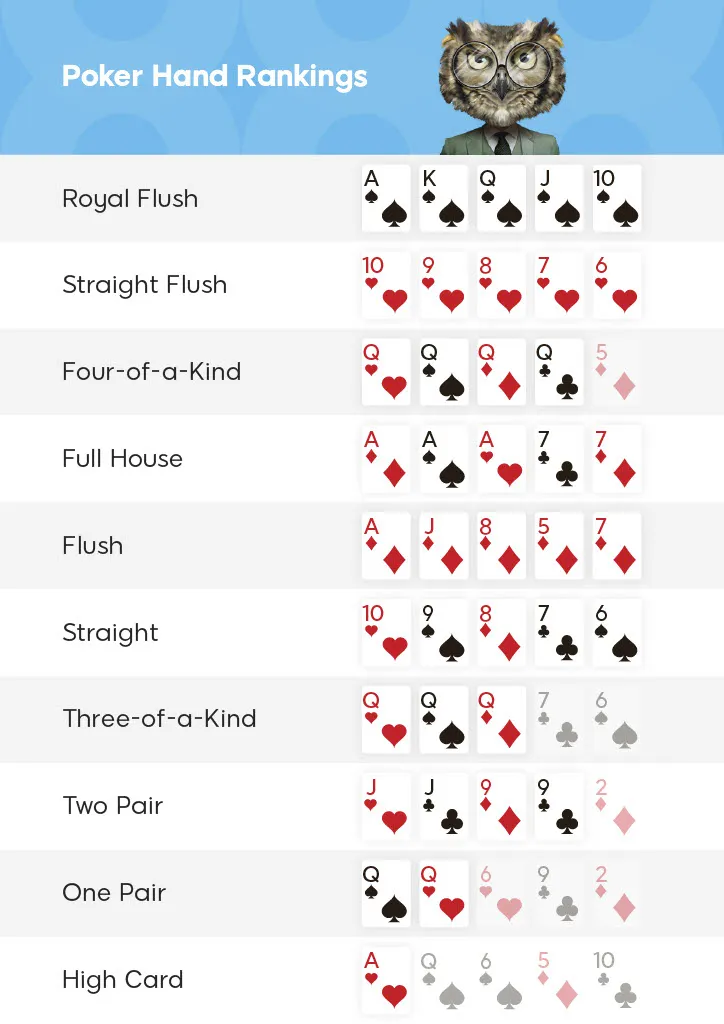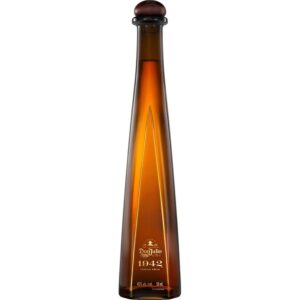A poker cheat sheet is a quick reference guide that helps players make informed decisions. It includes hand rankings, probabilities, and strategic tips.
Poker is a game of skill, strategy, and chance. A poker cheat sheet serves as a valuable tool for both beginners and seasoned players. It provides essential information at a glance, such as hand rankings, pot odds, and optimal betting strategies.
With this guide, players can make better decisions quickly, improving their overall game performance. Whether you play Texas Hold’em, Omaha, or any other variant, having a cheat sheet can be your secret weapon. It simplifies complex strategies and helps you stay ahead of your opponents. Use it to boost your confidence and enhance your poker-playing experience.
Poker Basics
When diving into the world of poker, having a cheat sheet is like having a treasure map. It guides you through the basics and helps you master the game. Understanding the fundamentals is key to becoming a successful poker player. In this section, we’ll cover the essential poker basics, including the game rules and hand rankings, ensuring you’re well-prepared for any poker table.
Game Rules
The basic rules of poker are simple, yet mastering them takes practice. Here’s a quick rundown:
- Players: Poker can be played with 2 to 10 players.
- Deck: A standard 52-card deck is used.
- Objective: The goal is to win chips by having the best hand or bluffing.
Each game round includes several key stages:
- Blinds: Two players post small and big blinds before the cards are dealt.
- Deal: Each player receives two private cards, known as hole cards.
- Betting Rounds: There are four betting rounds: Pre-flop, Flop, Turn, and River.
- Showdown: Players reveal their hands, and the best hand wins the pot.
Understanding the betting options is also crucial:
- Check: Pass the action to the next player without betting.
- Bet: Place chips in the pot.
- Call: Match the current bet.
- Raise: Increase the current bet.
- Fold: Discard your hand and forfeit the round.
Hand Rankings
Knowing the hand rankings is essential for making informed decisions. Here are the standard poker hand rankings from highest to lowest:
| Hand | Description |
|---|---|
| Royal Flush | 10, J, Q, K, A of the same suit. |
| Straight Flush | Five consecutive cards of the same suit. |
| Four of a Kind | Four cards of the same rank. |
| Full House | Three of a kind plus a pair. |
| Flush | Five cards of the same suit, not in sequence. |
| Straight | Five consecutive cards of different suits. |
| Three of a Kind | Three cards of the same rank. |
| Two Pair | Two different pairs. |
| One Pair | Two cards of the same rank. |
| High Card | The highest card if no other hand is made. |
Always remember these rankings during the game. They help you decide whether to bet, call, or fold. Keep this cheat sheet handy, and you’ll never be confused about which hand wins.

Credit: www.blackrain79.com
Starting Hands
Poker can be a thrilling game of strategy and skill. One key to success is knowing which starting hands to play. Starting hands are the cards you get at the beginning of a round. Picking the right starting hands can set you on the path to victory.
Premium Hands
Premium hands are the best starting hands in poker. These hands have the highest chances of winning. Playing premium hands wisely can give you a big advantage.
Here are some examples of premium hands:
- Pocket Aces (AA): The best starting hand in poker.
- Pocket Kings (KK): Second only to pocket aces.
- Pocket Queens (QQ): Very strong, but watch out for Aces and Kings.
- Ace-King Suited (AKs): Can form the top pair, straight, or flush.
- Pocket Jacks (JJ): Strong but can be tricky to play.
Here is a table summarizing these premium hands:
| Hand | Description |
|---|---|
| AA | Best starting hand |
| KK | Second best hand |
| Very strong | |
| AKs | Top pair, straight, flush potential |
| JJ | Strong but tricky |
Marginal Hands
Marginal hands are not as strong as premium hands. They can still win, but you need to play them with caution.
Examples of marginal hands include:
- Ace-Ten (AT): Good if the flop helps you.
- King-Queen (KQ): Strong, but can be beaten by many hands.
- Small Pocket Pairs (22-66): Good if you hit a set.
- Suited Connectors (78s, 89s): Can form straights or flushes.
- Ace-Eight (A8): Decent, but watch out for higher Aces.
Here is a table summarizing these marginal hands:
| Hand | Description |
|---|---|
| AT | Good with a helpful flop |
| KQ | Strong but easily beaten |
| 22-66 | Good if you hit a set |
| 78s, 89s | Can form straights or flushes |
| A8 | Decent but risky |
Playing marginal hands well can turn a losing game into a winning one. Always be aware of your position and the tendencies of your opponents.
Position Strategy
Mastering the art of poker involves more than just knowing the rules. A crucial element in winning is understanding the Position Strategy. The position you are in at the table can greatly influence your decisions and overall success. This guide will help you navigate the complexities of position strategy in poker.
Early Position
In poker, the early position refers to the first few seats to the left of the dealer. This is considered the worst position because you must act first without knowing how other players will act. Here are some key points to consider when playing from an early position:
- Play tight: Only play strong hands like high pairs (A-A, K-K) or high cards (A-K, A-Q).
- Avoid Bluffing: Bluffing in early position is risky because many players still need to act.
- Be cautious: If you have a marginal hand, it’s best to fold.
Here is a quick reference table for hands to play in early position:
| Hand Type | Examples |
|---|---|
| High Pairs | A-A, K-K |
| High Cards | A-K, A-Q |
| Suited Connectors | K-Q, Q-J |
Late Position
The late position is the most advantageous position in poker. This includes the dealer and the player to the right of the dealer. Players in late position can see how others act before making their decision. Here are some tips for playing in late position:
- Play more hands: You can afford to play a wider range of hands since you have more information.
- Bluff more: Bluffing is more effective because you can gauge the strength of other players’ hands.
- Control the pot: You can decide whether to keep the pot small or make it big based on your hand strength.
Here’s a quick reference table for hands to play in late position:
| Hand Type | Examples |
|---|---|
| All Pairs | Any pair |
| High Cards | A-K, A-Q, K-Q |
| Suited Connectors | 10-9, 9-8 |
Playing in late position allows you to exploit your opponents and gain an edge in the game. Always take advantage of this position to maximize your winnings.

Credit: www.reddit.com
Betting Patterns
Poker can be complex, but a cheat sheet can help. Betting patterns give clues about opponents. Learning these can boost your game. This guide covers the basics of aggressive and passive play.
Aggressive Play
Aggressive play involves bold moves and big bets. This style aims to dominate the table. Players use it to push others out of hands. Here are key points:
- Frequent Betting: Aggressive players bet often. They rarely check or call.
- Large Bets: Bets are usually big. This forces opponents to make tough choices.
- Bluffing: Bluffs are common. Aggressive players often bet without strong hands.
Aggressive players control the action. They make opponents guess. This style can win many small pots. Yet, it also risks big losses. Knowing this pattern helps you spot aggressive players. You can then adjust your strategy.
| Action | Explanation |
|---|---|
| Raise | Increase the bet size. |
| Re-raise | Raise again after an opponent raises. |
| All-in | Bet all your chips. |
Playing against an aggressive opponent? Be patient. Wait for a strong hand. Then, make them pay. Aggressive play can be powerful but is also risky.
Passive Play
Passive play is the opposite. It involves cautious actions. Players avoid big bets. Key points include:
- Frequent Checking: Passive players check a lot. They rarely bet first.
- Calling: They call more often than raise.
- Small Bets: Their bets are usually small.
Passive players wait for strong hands. They avoid risks. This style can be safe but may miss opportunities. Spotting a passive player helps you take control. You can bet more and push them out of pots.
| Action | Explanation |
|---|---|
| Check | Pass the action to the next player. |
| Call | Match the current bet. |
Playing against a passive opponent? Be more aggressive. Passive play lets you take the lead. Push them out or make them pay to see more cards.
Bluffing Techniques
Poker is a game of skill, strategy, and psychology. One of the most thrilling aspects of poker is bluffing. A well-executed bluff can turn the tide of a game in your favor. This guide will provide essential bluffing techniques to help you outsmart your opponents and win big.
Effective Bluffing
Bluffing is an art that requires practice and precision. To bluff effectively, you need to understand your table dynamics and the personalities of your opponents. Here are some techniques to help you master the art of bluffing:
- Timing: Choose the right moment to bluff. Bluffing early in the game can be risky. Wait until you have gathered enough information about your opponents’ playing styles.
- Position: Bluffing from a late position is often more effective. This allows you to see how many players are still in the hand and their actions before making your move.
- Betting Patterns: Pay attention to your betting patterns. Consistency is key. If you suddenly make a large bet, it might raise suspicion.
- Body Language: Maintain a neutral body language. Avoid any signs of nervousness or excitement that could give away your bluff.
Here’s a table that summarizes when to bluff based on your position:
| Position | Bluffing Frequency |
|---|---|
| Early Position | Rarely |
| Middle Position | Occasionally |
| Late Position | Frequently |
Reading Opponents
To bluff successfully, you must read your opponents. Understanding their tendencies and behaviors will help you make informed decisions. Here are some tips for reading your opponents:
- Observe Betting Patterns: Take note of how your opponents bet. Are they aggressive or conservative? Do they bet big on strong hands?
- Watch for Tells: Physical tells can give away a player’s hand. Look for signs like shaking hands, rapid breathing, or avoiding eye contact.
- Player Types: Identify the type of player you are up against. Are they tight, loose, aggressive, or passive? Adjust your strategy accordingly.
- Previous Hands: Remember the outcomes of previous hands. Did a player bluff successfully or fold under pressure? Use this information to predict their future actions.
Here’s a table that categorizes player types and their common behaviors:
| Player Type | Common Behaviors |
|---|---|
| Tight | Plays few hands, bets only with strong hands |
| Loose | Plays many hands, bets with a wide range of hands |
| Aggressive | Frequently raises and bets |
| Passive | Rarely raises, often calls |

Credit: www.888poker.com
Pot Odds
Understanding pot odds is crucial for poker players. Pot odds help you decide whether to call a bet based on the size of the pot and the size of the bet. Mastering this concept can turn losing hands into winning ones. Let’s dive deeper into calculating and applying pot odds in your poker game.
Calculating Odds
Calculating pot odds involves comparing the current size of the pot to the cost of a contemplated call. This ratio helps determine whether the call is profitable. Here’s a step-by-step guide:
- First, determine the size of the pot before your opponent’s bet.
- Second, add your opponent’s bet to the pot size.
- Third, calculate the size of your potential call.
Use the following formula to find the pot odds:
Pot Odds = (Current Pot Size + Opponent's Bet) / Cost of CallFor example, if the pot contains $100, and your opponent bets $50, the pot becomes $150. If the cost to call is $50, the pot odds are:
Pot Odds = ($150 + $50) / $50 = 4 to 1Here’s a table for quick reference:
| Pot Size | Opponent’s Bet | Cost of Call | Pot Odds |
|---|---|---|---|
| $100 | $50 | $50 | 4 to 1 |
| $200 | $100 | $100 | 3 to 1 |
Applying Odds In Play
Applying pot odds during a game helps you make better decisions. If the pot odds are favorable, calling may be a good move. Compare the pot odds to the odds of completing your hand.
Consider these steps:
- Calculate your outs (the cards that will complete your hand).
- Determine the odds of hitting one of your outs on the next card.
- Compare these odds to the pot odds.
If the odds of completing your hand are better than the pot odds, calling is usually a good choice. For instance, if you have a flush draw with 9 outs, the chance of hitting your flush on the next card is roughly 19.1% (or 4.2 to 1).
Here’s a quick reference table:
| Number of Outs | Percentage Chance (One Card) | Odds |
|---|---|---|
| 1 | 2.1% | 47 to 1 |
| 9 | 19.1% | 4.2 to 1 |
By understanding and applying pot odds, you increase your chances of making profitable calls. Always keep an eye on the pot size and your potential returns.
Table Etiquette
Poker is a game of skill, strategy, and patience. To excel, players often use a poker cheat sheet. While knowing the rules and strategies is essential, understanding table etiquette is equally important. Good table manners ensure a smooth game and create a pleasant atmosphere. In this blog post, we will discuss table etiquette, focusing on Behavioral Norms and Handling Disputes.
Behavioral Norms
Maintaining good behavior at the poker table is crucial. Players should follow these norms to ensure a positive experience:
- Be polite: Always speak kindly to other players and dealers. Avoid using offensive language.
- Respect turn order: Wait for your turn to act. Acting out of turn can confuse the game.
- Keep your cards visible: Ensure your cards are always in plain sight. This helps avoid misunderstandings.
- Avoid slow play: Make decisions promptly to keep the game moving smoothly.
- Don’t discuss hands in play: Refrain from talking about the current hand while it is still active.
Here’s a table summarizing the key behavioral norms:
| Norm | Description |
|---|---|
| Politeness | Speak kindly and avoid offensive language. |
| Turn Order | Wait for your turn to act. |
| Card Visibility | Keep your cards in plain sight. |
| Prompt Decisions | Avoid slow play to keep the game smooth. |
| Hand Discussions | Don’t discuss active hands. |
Handling Disputes
Disputes can arise at the poker table. Knowing how to handle them is essential to maintaining a friendly atmosphere. Follow these steps:
- Stay calm: Keep your composure and avoid raising your voice.
- Call the dealer: If a dispute occurs, alert the dealer immediately. They are trained to handle conflicts.
- State facts clearly: When explaining your point, be concise and focus on the facts.
- Listen to others: Hear the other party’s perspective before responding.
- Accept the decision: Once the dealer or floor manager has made a decision, accept it gracefully.
Here’s a quick reference for handling disputes:
| Step | Action |
|---|---|
| 1 | Stay calm and composed. |
| 2 | Call the dealer immediately. |
| 3 | State facts clearly and concisely. |
| 4 | Listen to the other party’s perspective. |
| 5 | Accept the dealer’s decision gracefully. |
Following these guidelines helps maintain a positive and enjoyable game environment. Good table etiquette not only benefits you but also enhances the overall poker experience for everyone involved.
Common Mistakes
Playing poker can be thrilling, but many players make common mistakes that cost them the game. Understanding these mistakes is crucial for improving your skills and winning more often. A Poker Cheat Sheet can help, but you must also be aware of the pitfalls. Here, we’ll discuss two major errors: Overvaluing Hands and Ignoring Position.
Overvaluing Hands
One of the biggest mistakes in poker is overvaluing your hands. Many players think a strong-looking hand guarantees a win. This is far from true. Here’s why:
- Beginner’s Luck: New players often think any pair or high card is unbeatable. This leads to bad decisions.
- Context Matters: The strength of your hand can change based on the community cards and other players’ actions.
Here’s a quick guide to help you understand hand values better:
| Hand | Value |
|---|---|
| Pocket Aces | Strong, but not invincible |
| Low Pair | Weak, especially against multiple players |
| Suited Connectors | Potentially strong with the right community cards |
Remember to consider the board and the actions of other players. A pair of Aces might look great, but if the board shows a potential straight or flush, be cautious.
Ignoring Position
Another critical error is ignoring your position at the table. Your position can dictate the strength of your hand. Here’s why position is essential:
- Early Position: You act first and have less information about other players. Play tighter.
- Middle Position: Offers a balance. You can loosen up slightly.
- Late Position: You act last, gaining the most information. This allows for more strategic plays.
Use this simple table to understand how position affects your strategy:
| Position | Strategy |
|---|---|
| Early | Play strong hands only |
| Middle | Play a mix of hands |
| Late | Play more hands, including bluffs |
By understanding your position, you can make better decisions and increase your chances of winning. Always factor in your position before making a move.
Frequently Asked Questions
What Is A Poker Cheat Sheet?
A poker cheat sheet is a quick reference guide. It helps players understand hand rankings, odds, and strategies. Ideal for beginners and experienced players.
How Do You Use A Poker Cheat Sheet?
Use a poker cheat sheet to quickly recall hand rankings and odds. It can improve decision-making during the game.
Why Is A Poker Cheat Sheet Useful?
A poker cheat sheet helps you make better decisions. It provides a quick reference for hand rankings and odds.
Where Can I Get A Poker Cheat Sheet?
You can find poker cheat sheets online or in poker books. Many websites offer free downloadable versions.
Conclusion
Mastering poker requires practice and the right tools. Use this cheat sheet to improve your game. Stay focused, keep learning, and enjoy the thrill of poker. Remember, every great player started as a beginner. Happy playing and may your hands always be winning ones!




